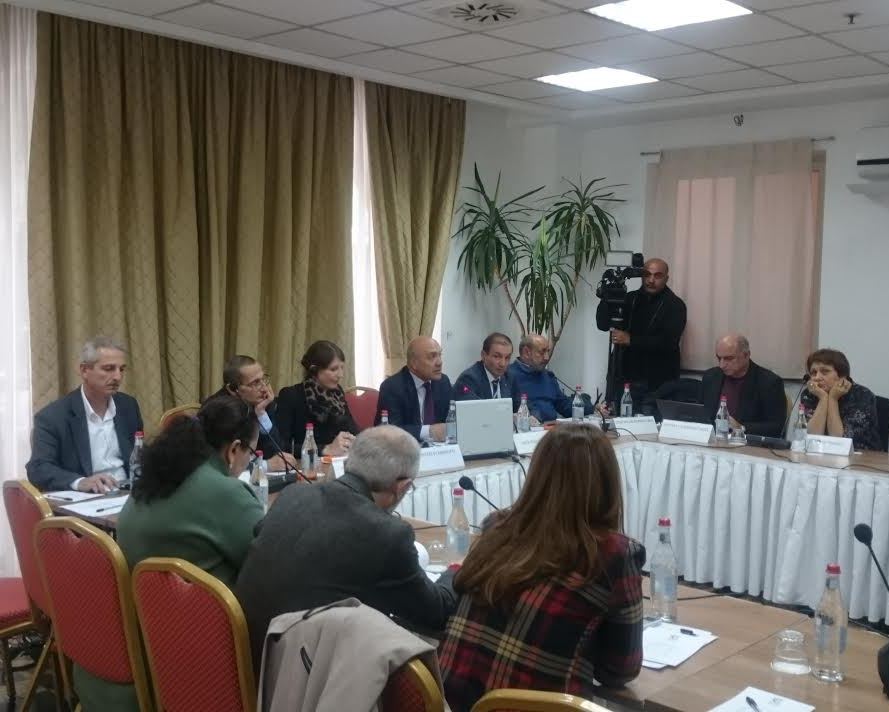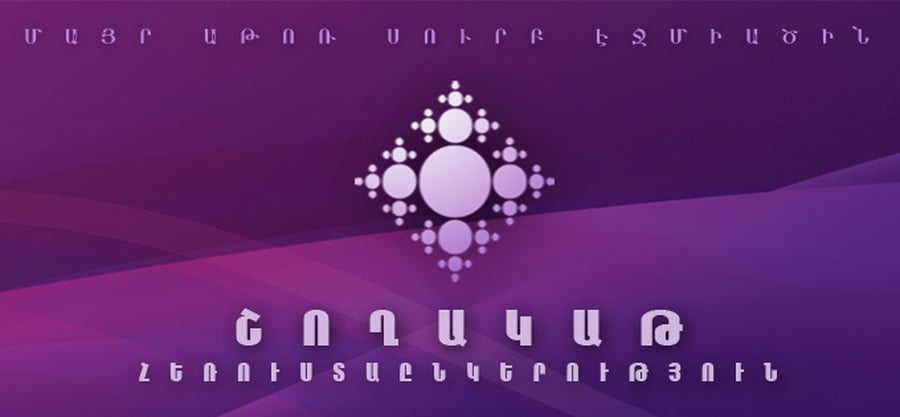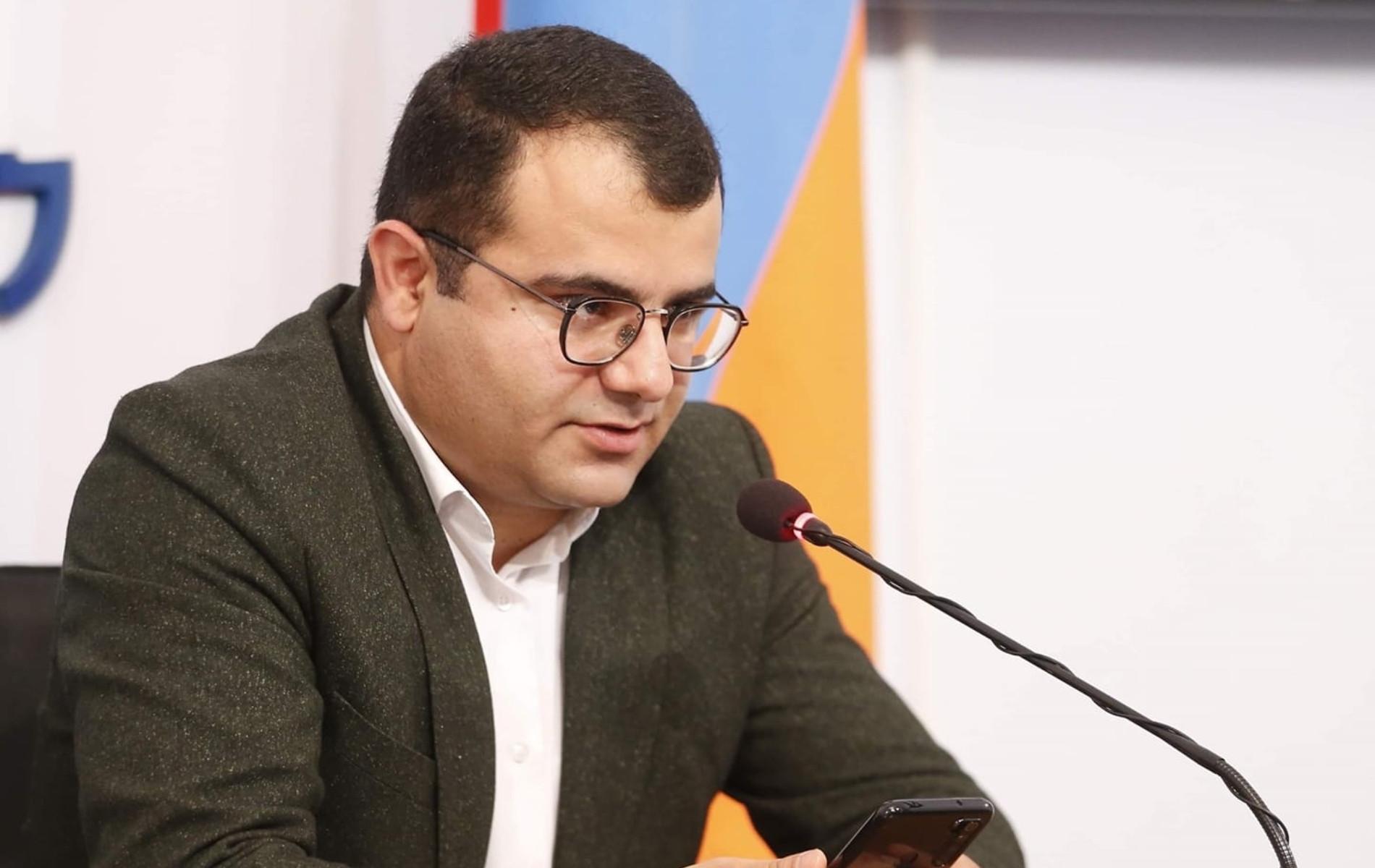Committee to Protect Freedom of Expression held a public discussion on October 18 entitled “Transition to Digital Television: Challenges, Problems and Possible Solutions”.
In his opening remarks, the chair of CPFE Ashot Melikyan said the process of switching off analog transmission ends on October 20. According to him, though technically Armenia is ready for digital transmission , some legislative, possibly also social issues have not been resolved. “For years on, three journalistic organizations – Committee to Protect Freedom of Expression, Media Initiatives Center, Yerevan Press Club – have prepared different recommendations which mostly passed unheeded. This year we decided to choose a different tactics and resolve the most urgent issues through small bills. We formed a working group, drafted two bills to amend the RA Law on Television and Radio. One of them has already been submitted to the six parliamentary groups, the other will be submitted soon,” Ashot Melikyan said.
Julia Blasius, Friedrich Ebert Stiftung South Caucasus Director, welcomed the participants and presented the details of the project implemented jointly with CPFE. In particular, she underscored the recommendations aimed at improvement of the legislation, as well as production of TV programs to raise awareness among the population of marzes on issues relating to digital broadcasting.
Artak Davtyan, head of the National Assembly Committee on Science, Education, Culture, Youth and Sport, informed that one of the bills prepared by the journalistic organizations has been circulated. “We will come back to this issue by all means in the upcoming month. We think that you will be helpful with your recommendations to come to terms during the discussion of the legislative initiative,”he promised.
Ashot Melikyan, the chair of CPFE, drew the attention of the participants of the discussion to the second bill prepared by the working group the core idea of which is to adopt a simplified procedure of licensing TV channels. “This idea has been discussed by experts for around five years. Simplified licensing would be a salvation for the regional TV companies which have to continue in analog broadcasting. We have repetitively stated this in the previous years,” Ashot Melikyan said.
The general director of Television and Radio Broadcasting Network of Armenia CJSC Grigor Amalyan spoke on the solutions of technical problems relating to digital transmission. According to him, the implementation of the entire project cost Armenia around 16 million drams. “11 million drams was spent on equipment bought from foreign partners, 2.5 million was allocated for acquisition of decoders for citizens at risk, the rest for taxes and dues,” Grigor Amalyan said. He informed that analog broadcasting will be switched off within a week.
Mesrop Harutiunyan, media expert, presented to the participants of the discussion the bills drafted by the working group. Bringing up the issue of regional TV companies that do not have a digital transmission license, he said that on October 20 when the process of switching off analog broadcasting starts, these TV companies will continue to operate but without audience. “Everyone will receive digital signals, and it is not known when the private multiplexers will appear on the market. The first bill we prepared will encourage the establishment of small and medium-sized multiplexers. At the same time, in a digital era it is important to adopt a simplified procedure for licensing TV companies, which is envisaged by the second bill drafted by the working group,” MesropHarutyunyan said.
Ara Ghazaryan, lawyer and member of CPFE working group, made a presentation on the international, particularly European norms regulating private multiplexers. The lawyer compared the biddings for establishing private multiplexers in Romania and Armenia. According to him, Romania chose the auction. “During one auction licenses were issued to 2 public, 40 regional and 19 local multiplexers who paid a very small state due, 86,000 euro in total. Meanwhile, the RA Law on State Dues sets dues at 100 million drams for private multiplexers,” Ara Ghazaryan said. He says it is necessary to check whether this requirement is not too tough and whether it is in line with the Constitution, public power. The lawyer also spoke about the next tough eligibility requirement for private multiplexers. “According to the eligibility requirements, the private multiplexer must cover the entire territory of Armenia. This is a limitation itself because not everyone can be eligiblefora bidding under such conditions. Hence, the question occurs whether this limitation has objective rationale or emanates from the financial interests of an economic operator or the urge to take a dominant or monopole position on the market,” Ara Ghazaryan said. According to him, there are principles that allow assessing how legitimate the 18 December 2015 amendments to the RA Law on Television and Radio are, whether they are necessary in a democracy or pursue other goals.
The chair of CPFE Ashot Melikyan underlined that unfortunately the process of adopting the aforementioned law was not open. “We tried every method to participate in drafting the bill, present our recommendations but our efforts were useless. Unacceptable provisions were included in the law created through a closed process,” Ashot Melikyan said, underlining that the activity of the National Television and Radio Commission would be important in this process but, unfortunately,this was not in place.
ZhirairDadasyan, the deputy chair of NTRC, explained the way how the law was adopted by “tight deadlines”. According to him, December 2015 was a very busy month, and since the transition to digital broadcasting had been scheduled on 1 January 2016, they had a deadline issue.
“And why did you organize the discussions on the last minute while the issue had been brought up years ago?” Nune Sargsyan, the head of Media Initiatives Center, retorted to the deputy head of NTRC, underlining that discussions on the television and radio and the relevant legislation already cause a déjà vu. Nevertheless, Nune Sargsyan presented Georgia’s successful experience of transition to digital broadcasting in Georgia. “All regional TV companies in Georgia were given an opportunity to get license for digital broadcasting and becoming a multiplexer. A simplified procedure was used for licensing. Georgia’s success in this sphere was determined by the honeymoon in the government-civil society relations. In our country this honeymoon was not in place,” Nune Sargsyan said.
In his presentation the chair of Yerevan Press Club Boris Navasardyan described what expectations we might have had from the regulatory body in the period of transition to digital broadcastingconsidering the international practice,. The National Television and Radio Commission, according to him, is not distinguished for its active regulatory functions. “The activities of certain TV companies do not correspond to the laws and international commitments of Armenia, there are broadcasters which do not meet the demands of their license in thematic terms, such as Armnews TV Company,” Navasardyan said.
The chair of YPC said that experts expect a more active role of NTRC in forming legislation. “No effective and constructive cooperation with NTRChas beenin place, had it been there, the legislative change of 18 December 2015 would not have been made. Such laws cannot promote the development of the sector,” Navasardyan concluded.
The heads of regional TV companies attending the discussion expressed their concerns, noting that the permission to continue analog broadcasting leads them to slow death rather than development. Underlining that the primary way to solve this issue is political, many of them raised the following question: will the authorities demonstrate political will to resolve the problem? This issue remains open.
Committee to Protect Freedom of Expression










